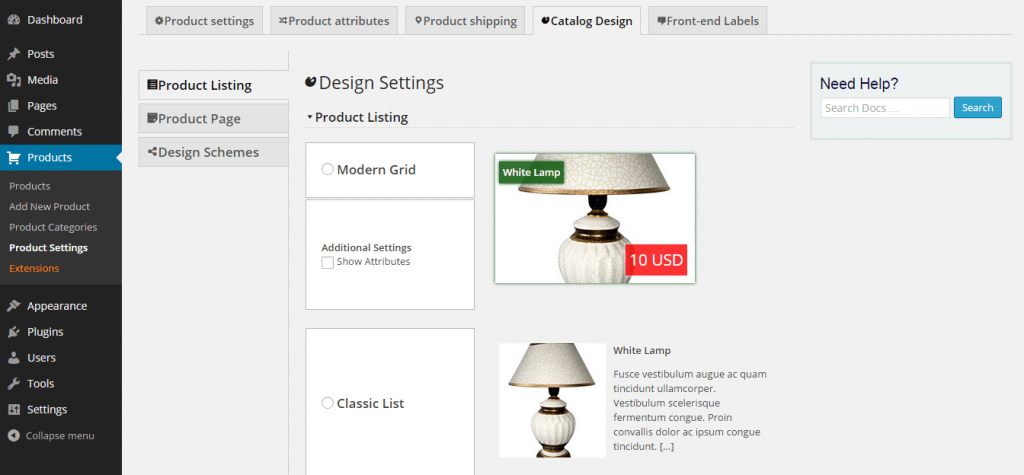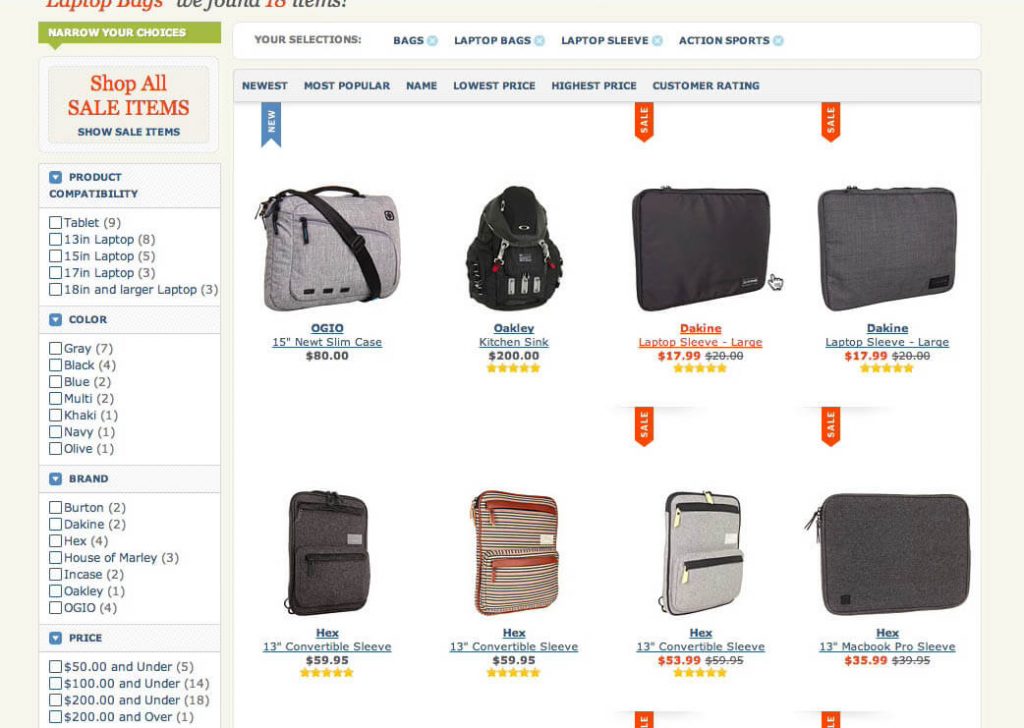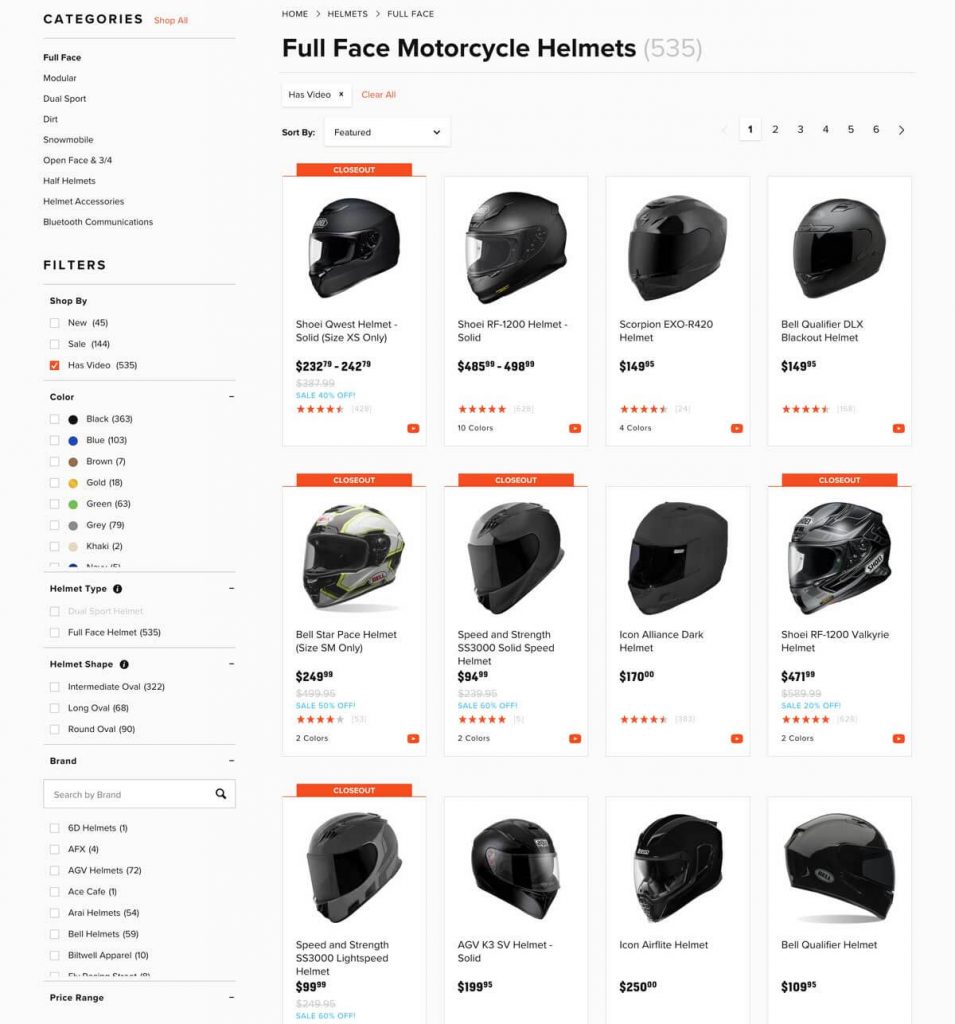The eCommerce product catalog – a vital page in your eCommerce store. A place where you show off your products to the customers. When done right, an efficient eCommerce catalog management system can mean more engaged leads, better prospects, and more conversions.
“When done right”. That’s the keyword here. There are certain factors that go into ensuring efficient eCommerce catalog management. In this post, we’ll be discussing them at length and provide you with six best practices you can use to manage your catalogs effectively.

Why are eCommerce catalogs important?

Regardless of whether you’re working in B2B or B2C, having an online presence matters a lot. For B2B business owners specifically, having a product catalog in both physical and digital formats is essential. With it, not only can they target their online customer base, but also their physical one as well.
With an organized catalog, you can reach a broader audience, and be seen as a professional in the eyes of consumers and competitors alike. There are plenty of resources you can use to design and develop your product catalog.
But efficiently managing that product catalog is a different matter altogether.
Challenges for Ecommerce Product catalog management
With product catalogs, businesses face the following challenges.
Stakeholder Management:
A business can’t thrive without stakeholders from both inside and outside the company. They form the essential backbone of your business processes. As such, catering to their needs should be your utmost priority.
The problem occurs when you have to adjust your processes to meet stakeholder demands. Often, this can result in making complete overhauls to your business processes.
The Right Ecommerce Catalog Management Tool:
You need to ensure that the right eCommerce catalog management tool is being used. To a certain degree, this can pose a challenge since internal business systems vary across the board.
Catalog Scalability:

As your business grows, so does your catalog. During the growth period, you need to ensure that there are no inconsistencies within your catalog structure. If such inconsistencies do occur, it can lead to more challenges in your business processes.
Ecommerce Product Catalog Management Best Practices
Map Your Catalog Management Process
Multiple stakeholders mean more complexity in business processes. To synchronize your catalog and stakeholder management processes, you need to map out the steps where the stakeholders are located in your eCommerce processes.
This mapping process can provide you with a 360-degree view of where your stakeholders are located within the catalog management process. Also, it shows you when and how catalog changes can affect those stakeholders.
With that understanding, you can customize your catalog management processes to cater to stakeholder concerns. At the same time, you’re also optimizing your eCommerce processes in the long-run.
While the process might be a bit complex, it can give out significant dividends in making your catalogs more granular and optimized.
Easily Manage Your E-Commerce Product Catalog Database
Since catalog management systems fall under the category of Information Systems (IS), you’ll have to maintain a database. To avoid clutter, you need to keep it clean and organized. The following are some best practices that you can follow:
- Avoid multiple databases: As discussed before, having multiple databases causes more clutter. To keep things organized, make sure you have a single product catalog database to manage your processes. Depending on your operations, it can be as complex as an ERP system or even a spreadsheet file.
- Create a product catalog hierarchy: Assigning roles and permission to your product catalog database helps you restrict stakeholders from making unnecessary changes to the product database. It creates an authorization flow that improves the data quality and strengthens security.
- Scalability concerns: If you feel that your business is growing, you need to ascertain the viability of expanding your database. For that, you need to look at whether or not your existing data structures are scalable enough, or would you need a more scalable option.
Build trust with quality product information
Coming to the consumer-end of things, you need to make sure that your product catalog facilitates the customer experience. This would involve you providing accurate and relevant information that builds trust and displays authority.

The end-goal of displaying such information is to add value to a customer’s eCommerce experience. When they are confident that the seller is legitimate, only then will they make a purchase. While you can certainly make-do without catering to the customer experience, focusing on this best practice helps improve sales and gain more revenue.
To give you a run-down, this is how you can improve the product quality with the help of content:
- Comprehensive product information: First and foremost, you need to update the content in your product catalog. To elaborate, you need to provide more details about each product within your catalog. From product attributes to technical details, features, images, video content, and more, you need to add as much value as you possibly can. Also, you can ensure that the design of your product catalog is consumer-friendly and easy to navigate.
- Update your info: If your product information is stale, your customers will have second-thoughts during the decision-making process. As such, you need to keep your information updated. For example, if you’re selling a SaaS product and a new update comes out, you need to update the catalog entry for that product with the latest features.
- Focus on design: To reiterate the first point, all your content quality falls apart when you don’t focus on design. In addition to content, it focuses on a consumer-savvy design that’s easy to navigate.
You can also add more content forms like audio, video, and infographic content, but ideally, you should begin with these best practices and then move on to the more advanced ones.
Select A Catalog Management Tool
There are plenty of catalog management tools available online. In general, your product catalog can be managed through:
- An eCommerce platform
- Spreadsheet software
- Product information systems
- Ecommerce integration with ERP
Selecting the right catalog management solution would involve performing an audit of your current business processes. Analyzing your operations’ scale, labor resources, among other factors, can prove extremely beneficial when you’re looking to grow.
Regardless of the platform you select, you should always avoid running the risk of duplication and keep a single platform for catalog management.
Upsell and cross-sell with related and alternative products
When it comes to optimizing eCommerce sales, there is no better option than selling related products to complement the original purchase.
Your product catalog database should contain products and their complements side-by-side. This helps in making product suggestions a lot easier. Product suggestions are a helpful method in adding more value to a purchase. Also, it helps keeps users at ease since they have a choice of purchasing a compliment without actually searching for it.
Also, you can also display alternative products. For example, if the users have decided on a product but are not sure about the purchase, you can display alternative products to help them decide on the product better.
Tag and categorize your digital product catalog
Optimizing the customer journey is an essential aspect of improving customer experience. One method you can use to optimize your customer journey is by making the product search granular.
By this, we mean using proper tags, filters, categories to help users sift through products quickly to view only relevant product displays.
But here’s the thing, when you do this, keep the user in mind. Focusing on the user’s perspective and how they perform the customer journey can help you customize the product search. Suppose your users are segmenting products based on a specific category other than the one’s you’ve already added for them. In that case, you need to add that category to cater more to customers.
Ecommerce UX best practices
To categorize your eCommerce catalogs even further, you can look at the following tips:
- Have a wonderfully designed website. When creating an eCommerce website, there are plenty of considerations you need to take into account. As such, you should always keep eCommerce UX best practices in mind.
- Make sure that your product tags are categorized accordingly. For example, if you’re using a particular term for a product, make sure that it’s consistent across the website.
- Follow consistencies with measurement. If you’re using the metric system for measurement, keep it consistent with other products on your website.
- To help users differentiate between similar products, focus on adding content that differs one product from another where possible. For example, if you have two similar machinery types, you can add some factors that differentiate them.

Conclusion
In this post, we talked about the six best catalog management practices you can look at to improve your store operations. To get the best catalog management platform for your WooCommerce store, look no further than B2BWoo, which provides you with the ability to show or hide your catalog from non-logged-in users on your store.
If you’re a WooCommerce B2B store owner and want to enhance your productivity, then B2BWoo is the best option for you. It’s a one-stop-shop for your every WooCommerce B2B eCommerce solutions.
Read Also
- Pros and Cons of Customized And Vendor-Based eCommerce Solutions
- 16 Essential Features for a B2B Ecommerce Store
- Build vs Buy? Exploring your B2B eCommerce options
- Improve the Ordering Process For Bulk Buyers with Product Tables
- How Manufacturers and Distributors Can Embrace Remote Work
- 5 Incredible Ways to Improve Sales Conversion on a B2B Site
